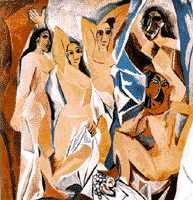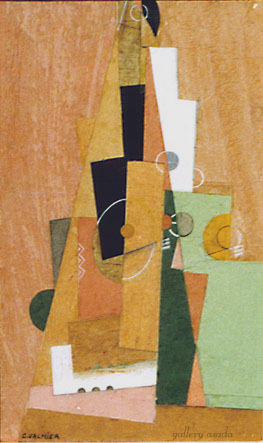An
early 20th-century school of painting and sculpture in which the subject matter
is portrayed by geometric forms without realistic detail, stressing abstract
form at the expense of other pictorial elements largely by use of intersecting
often transparent cubes and cones.
Cubism, highly influential visual arts style of the 20th
century that was created principally by the painters Pablo Picasso and Georges
Braque in Paris between 1907 and 1914. The Cubist style emphasized the flat,
two-dimensional surface of the picture plane, rejecting the traditional techniques
of perspective, foreshortening, modeling, and chiaroscuro and refuting time-honoured
theories of art as the imitation of nature. Cubist painters were not bound
to copying form, texture, colour, and space; instead, they presented a new
reality in paintings that depicted radically fragmented objects, whose several
sides were seen simultaneously.
CUBISM art Cubism school of painting and
sculpture
 Pablo Picasso, Les Demoiselles d'Avignon,1907
Pablo Picasso, Les Demoiselles d'Avignon,1907
Oil, 96 x 92in.

Braque. Le Portugais (the Emigrant).
Ceret [and Paris],autumn 1911-early 1912
Oil on canvas,46X32"(117X81cm)
 Valmier
Valmier
France(1885-1937)
Nature Morte a la pyramide
collage et gouache
20 X 12 cm
1919
CUBISM art Cubism school of painting and sculpture art
picasso cubism art Pablo Picasso
CUBISM art Cubism school of painting and sculpture art
picasso cubism art Pablo Picasso


